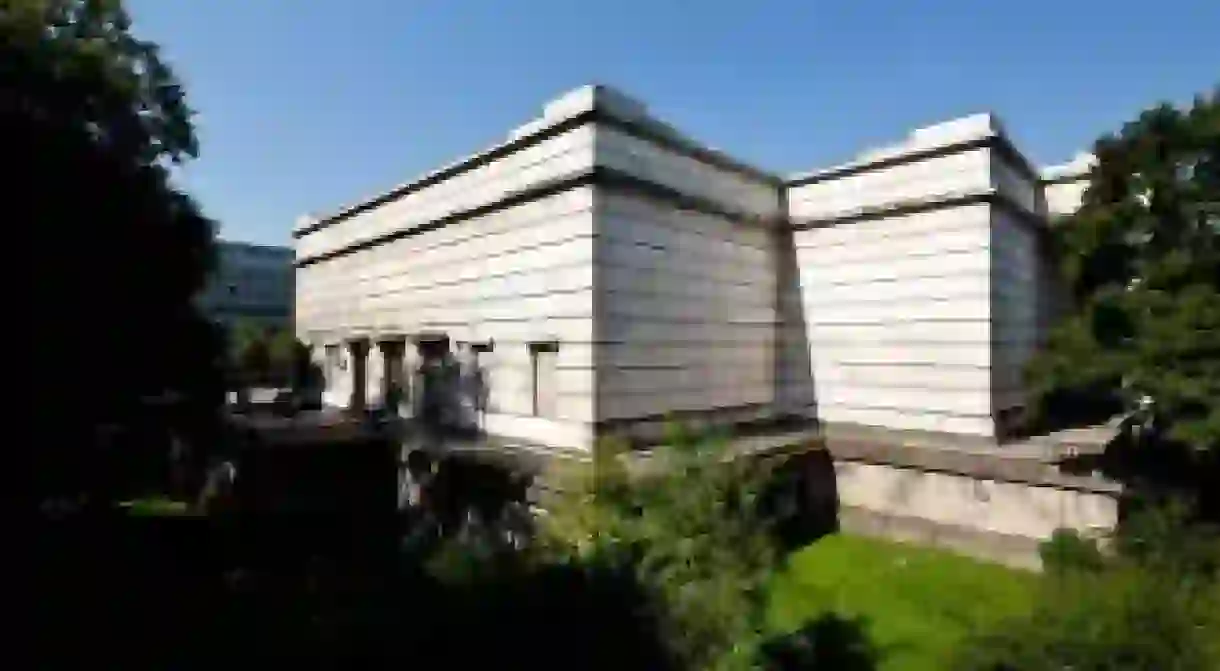Curator Okwui Enwezor On Embracing Nationality In A Global Age

Okwui Enwezor is a curator, art critic and leading figure in the art world, appointed Director of the Haus der Kunst gallery in Munich in 2011 and served as Director of the prestigious Venice Biennale. Born in Nigeria, his roots are intrinsically linked to his career path, and his desire to present contemporary African art beyond the westernised clichés continues to shape his curatorial and artistic choices.

According to his Wikipedia entry, ‘Okwui Enwezor is an Igbo Nigerian-born American curator, art critic, writer, poet, educator, and specializing in art history.’ When Enwezor’s name is mentioned, his nationality is invariably a prefix. In this age of globalisation, the art world has seen dialogue that crosses national boundaries and divides almost seamlessly; yet even in this delimited sphere, it still seems impossible to shake off where you came from. Rather than take issue with this fact, though, Enwezor has embraced it, and uses his diasporic and varied past to inform his curatorial, publishing and artistic activities in general.

Enwezor was born in Nigeria in 1963, and moved to New York in 1982 to study at the New Jersey City University. In 1993 he began Nka Journal, a tri-annual publication that exposes contemporary African art to a wider sphere. African art has precious little exposure in the wider world beyond the traditional, anthropomorphic trope, and a Western perspective tends to see contemporary art as either falling into this category or being a direct reaction against it. Publishing the journal with two fellow Africans – Salah Hassan and Chika Okeke-Agulu – Nka clearly avoids these pitfalls. Content largely emerges from the continent rather than outside of it, so the artists and arguments presented are at the forefront of contemporary artistic debate in Africa.
Yet Enwezor’s activities are certainly not limited to publishing, and it is in the curatorial sphere that he has seen the greatest professional acclaim. After curating a photographic exhibition at the Guggenheim in 1996, Enwezor’s career has steadily built. His credits are now too many to list, spanning Munich, New York, Johannesburg and London, to name but a few; the galleries and artists he has worked with reads as a catalogue of some of the art world’s major power players, reflecting his general position within the artistic sphere. Notably, he was Artistic Director for the Johannesburg Biennial in 1997; Artistic Director of Documenta 11 in Kassel, Germany (1998-2002); and curator of Century City at the Tate Modern (2001).

More recently, Enwezor was appointed Artistic Director of the La Triennale in Paris in 2012, based in the Palais de Tokyo. It is clear from this show – along with the myriad other on his lengthy CV – that the curator has a vested interest in examining national identity in the present age. The title, Intense Proximity referred to the differing, sometimes conflicting networks and relationships that are now being established worldwide. In the accompanying press for the exhibition, Enwezor wrote that the goal was not “to study ways in which contemporary societies can develop a shared space where these communities can live together. The question is more about how to cope with the disjunctions, the density of our ethnocentric processes founded on identity.”
Showing work that stretched from Walker Evans’ African Negro Art series to contemporary practitioners such as Chris Ofili and South African Guy Tillim, the show did not attempt to ignore or pass over artists’ origins. Rather, it raised continued questions of how one’s history can inform one’s work and how it is received, whether these frameworks can be surpassed, and further, whether they should be.

Subsequent to this impressive show – widely held in high acclaim – Enwezor has curated a photographic exhibition, titled Rise and Fall of Apartheid: Photography and the Bureaucracy of Everyday Life at New York’s International Center of Photography, that closed on 6 January 2013. Including some 500 photographs, films, books and archival documents, Rise and Fall… was an attempt to understand the everyday implications of the Apartheid for those who lived under its sway. Whilst perhaps a more histographic show than La Triennale, Enwezor nonetheless sought to counteract the outsider’s perspective of this regime. The broad range and sources of media included provided the viewer with a decentralised look at the Apartheid, whilst the inclusion of press footage looked at the aesthetic fetishising of what was, in reality, a horrific situation. The exhibition then moves to Haus der Kunst in Munich (15 February – 26 May). Enwezor, incidentally, is currently Director of Haus der Kunst: clearly, his career shows no signs of slowing down its relentless pace.
It is clear, then, that Enwezor’s origins continue to inform his artistic and curatorial decisions. The global art world has precious few figures from Africa who have reached such a level as Enwezor, and it is testament to his integrity that while his curatorial credits have a clear geo-political bent, he has never pandered to tokenism or fallen back on tired clichés of what the western world expects from African art. With so few contemporaries from similar backgrounds, it is perhaps inevitable that his nationality has in some part come to define Okwui Enwezor. Yet, as he continues to demonstrate, this can be used as a tool to inform and, indeed, benefit his artistic voice.
In 2015, Enwezor was made Director of the Visual Arts Sector for the Venice Biennale, overseeing the conceptualization and curation of the influential exhibition’s 2015 show. Titled All the World’s Futures, the 2015 Biennale reflects Emwezor’s ever-present interest in the interwoven relations between different countries.













